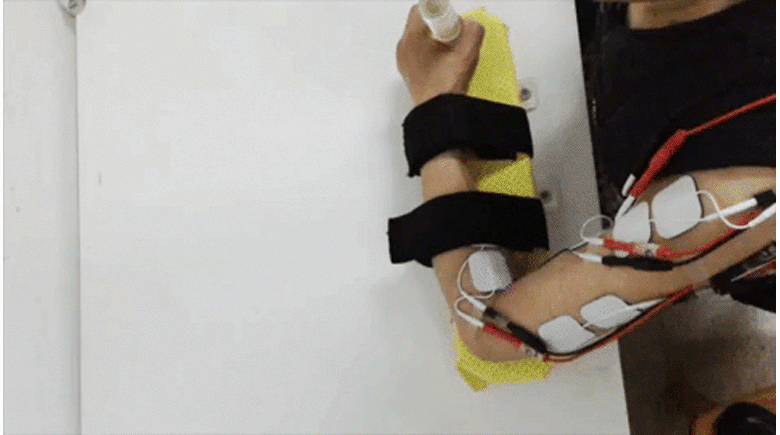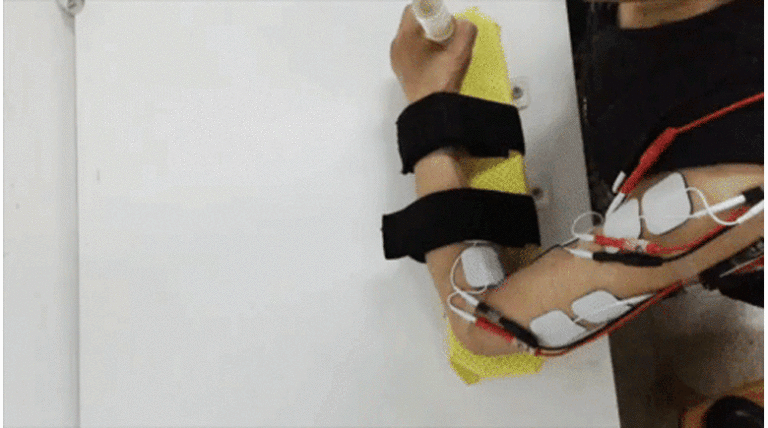
Functional electrical stimulation (FES) is capable of activating muscles that are under-recruited in neurological diseases, such as stroke. Therefore, FES provides a promising technology for assisting upper-limb motor functions in rehabilitation following stroke. However, the full benefits of FES may be limited due to lack of a systematic approach to formulate the pattern of stimulation. Our preliminary work demonstrated that it is feasible to use muscle synergy to guide the generation of FES patterns.In this paper, we present a methodology of formulating FES patterns based on muscle synergies of a normal subject using a programmable multi-channel FES device. The effectiveness of the synergy-based FES was tested in two sets of experiments. In experiment one, the instantaneous effects of FES to improve movement kinematics were tested in three patients post ischemic stroke. Patients performed frontal reaching and lateral reaching tasks, which involved coordinated movements in the elbow and shoulder joints. The FES pattern was adjusted in amplitude and time profile for each subject in each task. In experiment two, a 5-day session of intervention using synergy-based FES was delivered to another three patients, in which patients performed task-oriented training in the same reaching movements in one-hour-per-day dose. The outcome of the short-term intervention was measured by changes in Fugl–Meyer scores and movement kinematics. Results on instantaneous effects showed that FES assistance was effective to increase the peak hand velocity in both or one of the tasks. In short-term intervention, evaluations prior to and post intervention showed improvements in both Fugl–Meyer scores and movement kinematics. The muscle synergy of patients also tended to evolve towards that of the normal subject. These results provide promising evidence of benefits using synergy-based FES for upper-limb rehabilitation following stroke. This is the first step towards a clinical protocol of applying FES as therapeutic intervention in stroke rehabilitation.

